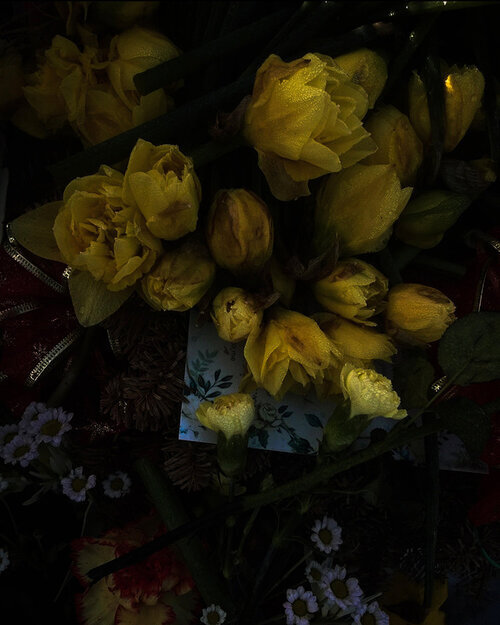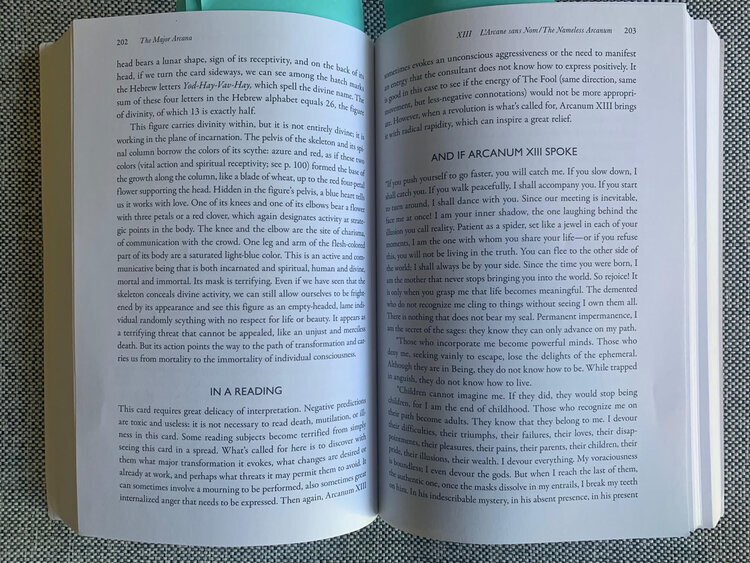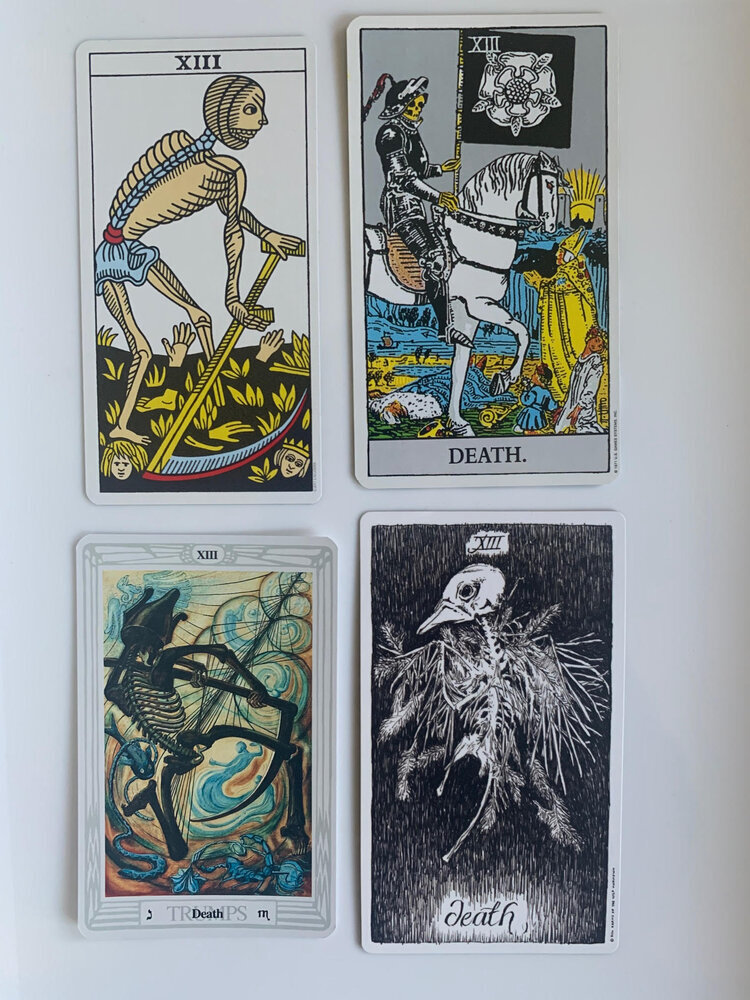Death Awareness, Grief & Grieving Resources
This is a live & running list of the resources I’ve found helpful in navigating the experience of my Dad’s death in May, 2020.
BOOKS I’VE READ & RECOMMEND
Walking Each other Home: Perfect and beautiful. Exactly what I needed. Didn't want it to end.
The Year of Magical Thinking: Poignant. Poetic, real. Yes.
Pure Color — Sheila Heti: Stunning.
On Death & Dying, What the Dying Have to Teach Doctors, Nurses, Clergy and Their Own Families: Lightly helpful. Gentle. Felt more for medical practitioners than family.
Death: The Final Stage of Growth: “Once we come to terms with death as a part of human development, the author shows, death can provide us with a key to the meaning of human existence.”
On Grief & Grieving: Good. Helpful. Classic.
The Wheel of Life A Memoir of Living and Dying: Ross’s autobiography. Rounds out her experience.
Let’s Talk About Death (Over Dinner): “Offers keen practical advice on how to have these same conversations--not just at the dinner table, but anywhere.” Okay. Helpful up-front but didn't need all of the anecdotes (which were the remainder of the book). Good to read/apply in the years prior to death.
The Tibetan Book of The Dead translations & interpretations:
The Tibetan Book of Living & Dying: Currently reading. Feels perfect. Wish I’d read it sooner.
Robert Thurman on the book (audio): Only recommended if you’ve not yet fluent in Ram Dass or Alan Watts.
Meditations on Living, Dying, and Loss, The Essential Tibetan Book of the Dead
Liberation Upon Hearing in the Between: Living with the Tibetan Book of the Dead
The Denial of Death: “Becker tackles the problem of the vital lie -- man's refusal to acknowledge his own mortality. In doing so, he sheds new light on the nature of humanity and issues a call to life and its living that still resonates more than twenty years after its writing.” Meta-psychoanalytical. Redundant for me but interesting if you’re newer to, or want to go deep on psychoanalysis. Perhaps best outside of the acute stages of loss. Pulitzer Prize winner and referenced widely as seminal.
I Am That: Not death specific but very applicable. A sort of bible for the concepts of impermanence, non-duality, meditation as life, self realization. I will return to this for guidance in years to come.
The Book of Dead Philosophers: Humorous. Enjoyable but perhaps best before or quite a bit after the more intense periods of loss or grief. I found it too lighthearted for the first several months, at least.
This Life: I read a year ago. Re-reading parts.
A Grief Observed, C.S. Lewis: Listened to (audiobook) twice and appreciated it perfectly. A frank and eloquent description of the experience of acute grief.
Staring at the Sun Overcoming the Terror of Death, Irvin Yalom: Excellent, especially for therapists or therapy-keen. Will read more of him.
The Orphaned Adult: Understanding And Coping With Grief And Change After The Death Of Our Parents
Grief and Mourning in Cross-Cultural Perspective
Related, read online: Grief and Mourning in Cross Cultural Perspective
I have continued to find the anthropological texts and insights (global, historical accounts of cross-cultural approaches to death, grief, mourning) most helpful.
Japanese Death Poems: Written by Zen Monks and Haiku Poets on the Verge of Death
Counterpoint: A Memoir of Bach and Mourning, recommended for classical-music fans, or musicians especially.
The Craft of Dying by Lyn Lofland: “The Craft of Dying will help readers understand contemporary death social movements' historical relationships to questions of race, class, gender, and sexuality and is a book that everyone interested in end-of-life politics should read.”
From Here to Eternity: Traveling the World to Find the Good Death
The Iceberg, A Memoir, “Winner of the Wellcome Book Prize, and finalist for every major nonfiction award in the UK, including the Samuel Johnson Prize and the Costa Award, The Iceberg is artist and writer Marion Coutts’ astonishing memoir; an “adventure of being and dying “and a compelling, poetic meditation on family, love, and language.”
Levels of Life, “An NPR Best Book of the Year. In this elegant triptych of history, fiction, and memoir, Julian Barnes has written about ballooning and photography, love and grief; about putting two things, and two people, together, and tearing them apart; and enduring after the incomprehensible loss of a loved one. Powerfully rendered, exquisitely crafted in Barnes’s erudite style, this searing work confirms the author as an unparalleled magus of the heart.”
The State of Disbelief, “A revelatory book about death and mourning by a psychotherapist faced with sudden bereavement.”
The courage to Grieve, The Classic Guide to Creative Living, Recovery, and Growth Through Grief
The Sense of an Ending, “A novel so compelling that it begs to be read in a single setting, The Sense of an Ending has the psychological and emotional depth and sophistication of Henry James at his best, and is a stunning achievement in Julian Barnes's oeuvre.”
Languages of Loss, A psychotherapist's journey through grief
No Death, No Fear, “In No Death, No Fear, the acclaimed teacher and poet examines our concepts of death, fear, and the very nature of existence. Through Zen parables, guided meditations, and personal stories, he explodes traditional myths of how we live and die. Thich Nhat Hanh shows us a way to live a life unfettered by fear.”
When Things Fall Apart, “Here, in her most beloved and acclaimed work, Pema shows that moving toward painful situations and becoming intimate with them can open up our hearts in ways we never before imagined. Drawing from traditional Buddhist wisdom, she offers life-changing tools for transforming suffering and negative patterns into habitual ease and boundless joy.”
A Year to Live, How to Live This Year as If It Were Your Last — Stephen Levine
“Jung admits death is a mystery, something we cannot completely understand, describe, explain or image. Death throws up a question that we cannot answer. But, for all the frustration that implies, we must try to grapple with it. Why? Jung replies: “Not to have done so is a vital loss. For the question ... is the age-old heritage of humanity: an archetype, rich in secret life, which seeks to add itself to our own individual life in order to make it whole.”
MORE BOOKS
The Encyclopedia of Death and Dying, so much here
Prayers Honoring Grief, a workbook that includes journaling prompts
This Party’s Dead, Grief, Joy and Spilled Rum at the World’s Death Festivals
“Death is a ubiquitous life experience and yet we pretend it won’t affect us … until that choice is taken away.”
SHORTER READS (articles, essays, collections, poems)
Obit (poetry) & Dear Memory (letters) — Victoria Chang (video of Chang reading from Obit)
Rumi, “On the day I die”
Diana Khoi Nguyen, poet, wow (see also, her Vimeo)
Poet Susan Howe on her process, reasons for writing an elegy to her husband, and grief-art.
The Returned: When death is not the end: In Tibetan tales and popular culture the dead have a way of coming back with a purpose
Embodied Philosophy’s publication, Tarka. Issue #4 On Death “we explore the topic of death from the perspective of contemplative traditions – including various ways of understanding and relating to the dying process, consecrating grief and loss, and practices designed to alleviate the suffering generally associated with death.”
Studio Ananda: alchemizing grief + an interview with end of life doula Ocean Sawyer
"Prolonged Grief Disorder" added to the DSM-5. Progress or problematic?
“To live fully, death is essential—every ending makes a new beginning.”
COMMUNITIES & GUIDES
My personal guide, who also edited my book, and whom I still meet with weekly: Laura Sullivan Cassidy.
Morbid Anatomy “Surveying the interstices of art and medicine, death and culture.”
The Morbid Anatomy offers excellent classes. After the initial shock and paid subsided, I began enrolling in classes and attending talks, lectures, and readings.
Greenwood Cemetery for an actual visit if you’re in New York but also for online classes/events.
Leaves With You: Rituals and biodegradable coffins for grief and death
Death Cafe, at a Death Cafe people, often strangers, gather to eat cake, drink tea and discuss death. Our objective is 'to increase awareness of death with a view to helping people make the most of their (finite) lives'.
The Grief Diaries.org, a magazine of art & writing about loss. (And, their list of resources)
ModernLoss.com, “a website offering candid content, resources and community on loss and grief. Beginners welcome.”
EOL / End of Life: Create a simple end of life plan and explore a community to help you through life's most vulnerable time.
The Grief Network a community by and for bereaved young people (teens/20s/30s)
Let's Talk About Loss: Meet ups for 18-35 year olds who have been bereaved
Reimagine: Exploring death + celebrate life | “We host live and virtual events bringing communities together for an exploration of death and celebration of life through creativity and conversation.”
Dina Hassan, Psychoanalyst (Dina leads a Grief Circle process that is designed to process over nine months and can be done alone, or in a group)
“Nature is so exact, it hurts exactly as much as it is worth, so in a way one relishes the pain, I think. If it didn’t matter, it wouldn’t matter.”
RECOMMENDED TO ME (not yet read)
When Breath Becomes Air: “A non-fiction autobiographical book written by Paul Kalanithi. It is a memoir about his life and illness, battling stage IV metastatic lung cancer. It was posthumously published.”
Being Mortal: “Full of eye-opening research and riveting storytelling, Being Mortal asserts that medicine can comfort and enhance our experience even to the end, providing not only a good life but also a good end.”
Smoke Gets in Your Eyes: Recommended in “Let’s Talk about Death”
"Comforting Books" recommended by NYC’s Death Cafe
Death, A Graveside Companion, “A volume of unprecedented breadth and sinister beauty, Death: A Graveside Companion examines a staggering range of cultural attitudes toward death. The book is organized into themed chapters: The Art of Dying, Examining the Dead, Memorializing the Dead, The Personification of Death, Symbolizing Death, Death as Amusement, and The Dead After Life. Each chapter begins with thought-provoking articles by curators, academics, and journalists followed by gallery spreads presenting a breathtaking variety of death-related imagery and artifacts. From skulls to the dance of death, statuettes to ex libris, memento mori to memorabilia, the majority of the images are of artifacts in the astonishing collection of Richard Harris and range from 2000 BCE to the present day, running the gamut of both high and popular culture.” — Joanna Ebenstein Founder of Morbid Anatomy Museum (see “Communities” section)
Death Warmed Over: Funeral Food, Rituals, and Customs from Around the World
“He writes, “The ledger of birth and death, with entries more numerous than stars in the galaxy, will balance with dispassionate precision.” He argues that the cognizance and fear of our mortality motivates us to strike out in defiance against death and impermanence, to tell stories, to share in science, and to create art.”
WHAT TO WATCH
Ram Dass, Going Home, and especially Becoming Nobody
End of Life documentary
LISTEN TO
OnBeing | Death & Dying (podcasts)
Jon Hopkins, Quiet (playlist)
Stuff You Should Know: How Grief Works (podcast)
Grief, The Liturgists (podcast)
Shaping Grief With Language, OnBeing (podcast)
The Adventures of Memento Mori (podcast)
Good Grief: Guru Singh On Death & Loss (Rich Roll podcast)
https://www.freud.org.uk/2018/12/17/everyday-madness-lisa-appignanesi-in-conversation-with-adam-phillips/ (podcast episode)
Pauline Boss — Navigating Loss Without Closure
Pauline Boss coined the term “ambiguous loss” and invented a new field within psychology to name the reality that every loss does not hold a promise of anything like resolution. Amid this pandemic, there are so many losses — from deaths that could not be mourned, to the very structure of our days, to a sudden crash of what felt like solid careers and plans and dreams. This conversation is full of practical intelligence for shedding assumptions about how we should be feeling and acting as these only serve to deepen stress.
Supernatural Japan, an alternative look at modern Japan's uneasy relationship with ghosts and ghost stories.
HERBS & SUPPLEMENTS
Ashwagandha: 2 - 3g/day
SeroSyn: 1 - 3/day
Mucuna Pruriens
Nervines, heavy handedly
Kava > alcohol
For grief & heart: Hawthorne, motherwort, oat, linden, mimosa, rose. (Thank you so much, Herb Pharm.)
Flower essence: Whole Hearted. (My immense gratitude to the Supernatural team-family for this absolutely perfect companion.)
Custom formulation from Daniela Turley, Urban Healing.
Eye drops, nasal spray, humidifier.
Thanks to Anima Mundi Herbs for featuring this list, and additional herbs, in a recent story.
OTHER RESOURCES & RECOMMENDATIONS
Therapy, of any kind. I had multiple sessions per week with two different practitioners.
Write, journal, write
Exercise
Find wise people to talk to. Especially those with experience with death.
Allow yourself to be anything, every way, however you need. (Zach, thank you for feeding me, creating space, forgiving and giving.)
WeCroak (app): “Find happiness by contemplating death.”
Art of Dying programs from Open Center
Do: Write a letter to them with your dominant hand. Then, write a letter back to you from them with your non-dominant hand.
Listen. Feel. Just be.
Urns, (because shopping for urns online right now is a joke)
Both the Catholic and Buddhist traditions have meditations on the dead body. Buddhist charnel house or corpse meditations (maraṇasati) are examples. Here is a guided Buddhist death meditation.
Charnel Grounds (trigger warning, this leads to images of bodies and skeletons).
“People still persist in thinking that life is flat and runs from birth to death. But life, too, is probably round, and much greater in scope and possibilities than the hemisphere we now know.”
ART
MT Objects “design for ritual / design for death”
Sarah Elizabeth Sweeney “In this series I painstakingly built a digital background over images of my father to create a series of photographs in which I could see the hole that he left when he died.”
Graveyard Bins - The Graveyard’s Graveyard, “Consider the flowers. They are there to teach you something.”
Life in Death by Rebecca Louise Law: “Life in Death’ was directly inspired by Law’s visits to the Economic Botany Collection at Kew, which holds samples of historic artefacts and everyday objects made from a huge variety of plant specimens. The collection includes Ancient Egyptian funerary garlands dating from 1700BC which formed Law’s primary inspiration for the piece. The garlands were exhibited alongside the installation which contained 375,000 individual elements.”
From my dear friend and hypnotherapist, Daniel Ryan, pages from Alejandro Jodorowsky’s interpretation of the Tarot. These were some of the most beautiful words I’ve read on this journey yet.
“Death is an archetype, one of the experiences we all have, like birth, growing, creating, aging. As an archetype ithas intent, i.e. it wants something from us. It seeks to generate behaviors. Like what? Reflection, introspection,a turning within, tending to our soul, appreciating things psychic, like dreams and intuitions, and a deepening of ourlove of mystery. Death asks us to integrate within ourselves more of reality, including that aspect of ourselves thatexists outside space and time. In this way it strives to enrich individual life and make it more whole.”











